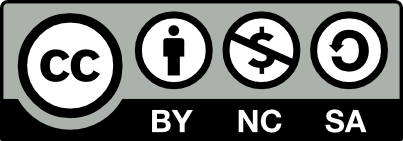Four-dimensional-printed personalized shape memory NiTi implant for minimally invasive delivery in cavitary bone defect reconstruction

Integrating 4D printing technology in medical implants offers promising advancements for minimally invasive delivery (MID) and personalized orthopedic solutions. This study presents a 4D-printed shape memory nickel-titanium (NiTi) mesh implant for cavitary bone defect reconstruction, enabling a time-dependent shape transformation. Fabricated through selective laser melting (80 W laser power, 600 mm/s scanning speed, 70 μm hatch spacing, 25 μm layer thickness), the implant can be compressed during implantation and recover its original shape. Micro-computed tomography analysis confirmed high geometric fidelity (D50 = 58 μm), while scanning electron microscopy-energy dispersive spectroscopy analysis revealed a uniform microstructure and confirmed the homogeneous distribution of Ni/Ti across the mesh implant. Phase transformation testing showed that the austenite finish temperatures (austenite finish) of the as-built sample and the acid-washed sample were below the 37°C physiological threshold. Compression testing indicated that a force of 156 N was required for 30% deformation, with complete recovery to its pre-defined shape. Clinically, the implant reduced cortical bone fenestration by 20%. Post-operative imaging at 6 and 12 months showed excellent osseointegration and minimal residual cavities. Functional assessments at 12 months indicated excellent recovery, with a Musculoskeletal Tumor Society score of 29. In the present study, the clinical use of the 4D-printed mesh implant demonstrated not only satisfactory osteointegration but also a practical advantage in surgical handling. The shape recovery of the implant from a compressed state to its pre-designed shape allowed for MID and precise fit to the defect contour.
- Horstmann PF, Hettwer WH, Petersen MM. Treatment of benign and borderline bone tumors with combined curettage and bone defect reconstruction. J Orthop Surg (Hong Kong). 2018;26(3):2309499018774929. doi: 10.1177/2309499018774929
- Zhang Y, Lu M, Min L, et al. Three-dimensional-printed porous implant combined with autograft reconstruction for giant cell tumor in proximal tibia. J Orthop Surg Res. 2021;16(1):286. doi: 10.1186/s13018-021-02446-x
- Qu Z, Yue J, Song N, Li S. Innovations in three-dimensional-printed individualized bone prosthesis materials: Revolutionizing orthopedic surgery: A review. Int J Surg. 2024;110:6748-6762. doi: 10.1097/JS9.0000000000001842
- Yang H, Fang H, Wang C, et al. 3D printing of customized functional devices for smart biomedical systems. SmartMat. 2023;5:e1244. doi: 10.1002/smm2.1244
- Gong T, Lu M, Wang J, et al. Is three-dimension-printed mesh scaffold an alternative to reconstruct cavity bone defects near joints? Int Orthop. 2023;47(3):631-639. doi: 10.1007/s00264-022-05684-8
- Raucci MG, D’Amora U, Ronca A, Ambrosio L. Injectable functional biomaterials for minimally invasive surgery. Adv Healthc Mater. 2020;9(13):e2000349. doi: 10.1002/adhm.202000349
- Ramezani M, Mohd Ripin Z. 4D printing in biomedical engineering: Advancements, challenges, and future directions. J Funct Biomater. 2023;14(7):347. doi: 10.3390/jfb14070347
- Agarwal T, Hann SY, Chiesa I, et al. 4D printing in biomedical applications: Emerging trends and technologies. J Mater Chem B. 2021;9(37):7608-7632. doi: 10.1039/d1tb01335a
- Subash A, Kandasubramanian B. 4D printing of shape memory polymers. Eur Polym J. 2020;134:109771. doi: 10.1016/j.eurpolymj.2020.109771
- Zhang J, Yin Z, Ren L, et al. Advances in 4D printed shape memory polymers: From 3D printing, smart excitation, and response to applications. Adv Mater Technol. 2022;7(9):2101568. doi: 10.1002/admt.202101568
- Khalid MY, Arif ZU, Noroozi R, Zolfagharian A, Bodaghi M. 4D printing of shape memory polymer composites: A review on fabrication techniques, applications, and future perspectives. J Manuf Processes. 2022;81:759-797. doi: 10.1016/j.jmapro.2022.07.035
- Shiblee MNI, Ahmed K, Kawakami M, Furukawa H. 4D printing of shape-memory hydrogels for soft-robotic functions. Adv Mater Technol. 2019;4(8):1900071. doi: 10.1002/admt.201900071
- Aydin G, Abdullah T, Okay O. 4D printing of self-healing and shape-memory hydrogels sensitive to body temperature. Eur Polym J. 2025;223:113651. doi: 10.1016/j.eurpolymj.2024.113651
- Amadi A, Mohyaldinn M, Ridha S, Ola V. Advancing engineering frontiers with NiTi shape memory alloys: A multifaceted review of properties, fabrication, and application potentials. J Alloys Compd. 2023;976:173227. doi: 10.1016/j.jallcom.2023.173227
- Maroof M, Sujithra R, Tewari RP. Superelastic and shape memory equi-atomic nickel-titanium (Ni-Ti) alloy in dentistry: A systematic review. Mater Today Commun. 2022;33:104352. doi: 10.1016/j.mtcomm.2022.104352
- L’H Y, Rayes F, Warrak A. Regulation, orthopedic, dental, endovascular and other applications of Ti-Ni shape memory alloys. In: Shape Memory Alloys for Biomedical Applications. Netherlands: Elsevier; 2009. p. 306-326.
- Alipour S, Taromian F, Ghomi ER, Zare M, Singh S, Ramakrishna S. Nitinol: From historical milestones to functional properties and biomedical applications. Proc Inst Mech Eng Part H. 2022;236(11):1595-1612. doi: 10.1177/09544119221123176
- Yu Z, Xu Z, Guo Y, et al. Study on properties of SLM-NiTi shape memory alloy under the same energy density. J Mater Res Technol. 2021;13:241-250. doi: 10.1016/j.jmrt.2021.04.058
- Yang Y, Zhan JB, Sui JB, et al. Functionally graded NiTi alloy with exceptional strain-hardening effect fabricated by SLM method. Scr Mater. 2020;188:130-134. doi: 10.1016/j.scriptamat.2020.07.019
- Mohamed OA, Masood SH, Xu W. Nickel-titanium shape memory alloys made by selective laser melting: A review on process optimisation. Adv Manuf. 2022;10(1):24-58. doi: 10.1007/s40436-021-00376-9
- Safaei K, Abedi H, Nematollahi M, et al. Additive manufacturing of NiTi shape memory alloy for biomedical applications: Review of the LPBF process ecosystem. Jom. 2021;73:3771-3786. doi: 10.1007/s11837-021-04937-y
- Sinha A, Kumar Rajak D, Shaik NB, et al. A review on 4D printing of nickel-titanium smart alloy processing, the effect of major parameters and their biomedical applications. Proc Inst Mech Eng Part E. 2023:09544089231154416. doi: 10.1177/09544089231154416
- Li Z, Lu M, Lei H, et al. Selective laser melting fabrication of body-temperature shape memory NiTi alloy for 4D-printed orthopedic implants. Virtual Phys Prototyp. 2024;19(1):e2413181. doi: 10.1080/17452759.2024.2413181
- Zhao YL, Zhang HR, Zhang JY, Hu YC. Postoperative functional assessment in patients with tumors around the knee treated with endoprosthetic reconstruction: A multicenter retrospective cohort study. Technol Cancer Res Treat. 2023;22:15330338231181283. doi: 10.1177/15330338231181283
- Wen S, Gan J, Li F, Zhou Y, Yan C, Shi Y. Research status and prospect of additive manufactured nickel-titanium shape memory alloys. Materials. 2021;14(16):4496. doi: 10.3390/ma14164496
- Yang L, Ferrucci M, Mertens R, et al. An investigation into the effect of gradients on the manufacturing fidelity of triply periodic minimal surface structures with graded density fabricated by selective laser melting. J Mater Proc Technol. 2020;275:116367. doi: 10.1016/j.jmatprotec.2019.116367
- Yang L, Wu S, Yan C, et al. Fatigue properties of Ti-6Al-4V Gyroid graded lattice structures fabricated by laser powder bed fusion with lateral loading. Add Manuf. 2021;46:102214.doi: 10.1016/j.addma.2021.102214
- Zhang W, Li Z, Chai M, Dong P, Wang Y. Selective laser melting of NiTi cardiovascular stents: Processibility, surface quality and mechanical properties. Opt Laser Technol. 2025;181:111842. doi: 10.1016/j.optlastec.2024.111842
- Liu X, Gu D, Yuan L, et al. Topological optimisation and laser additive manufacturing of force-direction-sensitive NiTi porous structures with large deformation recovery behaviour. Virtual Phys Prototyp. 2024;19(1):e2365860. doi: 10.1080/17452759.2024.2365860
- Yang X, Yang Q, Shi Y, et al. Effect of volume fraction and unit cell size on manufacturability and compressive behaviors of Ni-Ti triply periodic minimal surface lattices. Add Manuf. 2022;54:102737. doi: 10.1016/j.addma.2022.102737
- Wysocki B, Idaszek J, Zdunek J, et al. The influence of selective laser melting (SLM) process parameters on in-vitro cell response. Int J Mol Sci. 2018;19(6):1619. doi: 10.3390/ijms19061619
- Lu H, Ma H, Cai W, et al. Altered phase transformation behaviors and excellent bending shape memory property of NiTi shape memory alloy via selective laser melting. J Mater Proc Technol. 2022;303:117546. doi: 10.1016/j.jmatprotec.2022.117546
- Wang X, Yu J, Liu J, et al. Effect of process parameters on the phase transformation behavior and tensile properties of NiTi shape memory alloys fabricated by selective laser melting. Add Manuf. 2020;36:101545. doi: 10.1016/j.addma.2020.101545
- Shi G, Li L, Yu Z, et al. The interaction effect of process parameters on the phase transformation behavior and tensile properties in additive manufacturing of Ni-rich NiTi alloy. J Manuf Processes. 2022;77:539-550. doi: 10.1016/j.jmapro.2022.03.027
- Guo W, Sun Z, Yang Y, et al. Study on the junction zone of NiTi shape memory alloy produced by selective laser melting via a stripe scanning strategy. Intermetallics. 2020;126:106947. doi: 10.1016/j.intermet.2020.106947
- Qiu Y, Young ML, Nie X. High strain rate compression of martensitic NiTi shape memory alloys. Shape Mem Superelasticity. 2015;1:310-318. doi: 10.1007/s11661-016-3857-0
- Li C, Zhou Z, Zhu Y. A uniaxial constitutive model for NiTi shape memory alloy bars considering the effect of residual strain. J Intell Mater Syst Struct. 2019;30(8):1163-1177. doi: 10.1177/1045389X19835932
- Santoro A, Voto A, Fortino L, et al. Bone defect treatment in regenerative medicine: Exploring natural and synthetic bone substitutes. Int J Mol Sci 2025;26(7):3085. doi: 10.3390/ijms26073085
- Seesala VS, Sheikh L, Basu B, Mukherjee S. Mechanical and bioactive properties of PMMA bone cement: A review. ACS Biomater Sci Eng. 2024;10(10):5939-5959. doi: 10.1021/acsbiomaterials.4c00779
- Mlinaric MR, Durgo K, Katic V, Spalj S. Cytotoxicity and oxidative stress induced by nickel and titanium ions from dental alloys on cells of gastrointestinal tract. Toxicol Appl Pharmacol. 2019;383:114784. doi: 10.1016/j.taap.2019.114784
- Eliades T, Pratsinis H, Kletsas D, Eliades G, Makou M. Characterization and cytotoxicity of ions released from stainless steel and nickel-titanium orthodontic alloys. Am J Orthod Dentofacial Orthop. 2004;125(1):24-29. doi: 10.1016/j.ajodo.2003.09.009
- Chu CL, Wang RM, Yin LH, et al. Surface treatment of NiTi shape memory alloy by modified advanced oxidation process. Trans Nonferrous Metals Soc China. 2009;19(3):575-580. doi: 10.1016/S1003-6326(08)60315-5
- Chu CL, Guo C, Sheng XB, et al. Microstructure, nickel suppression and mechanical characteristics of electropolished and photoelectrocatalytically oxidized biomedical nickel titanium shape memory alloy. Acta Biomater. 2009;5(6):2238-2245. doi: 10.1016/j.actbio.2009.01.046



